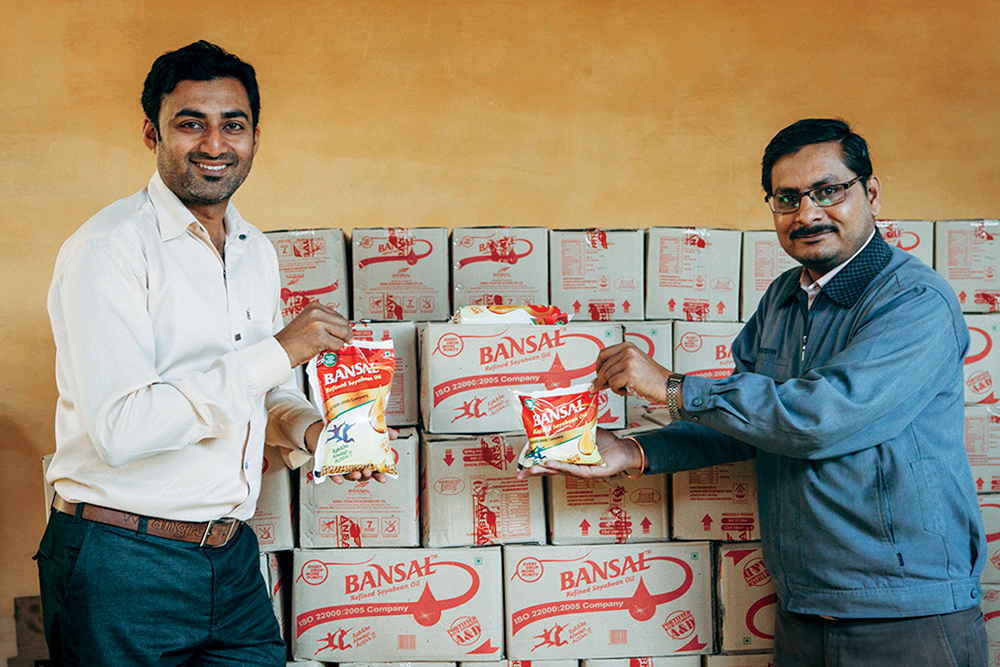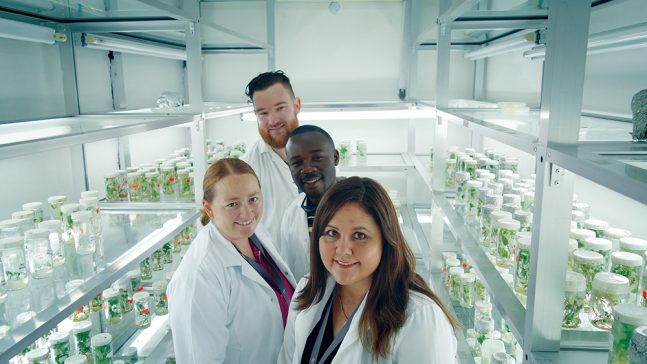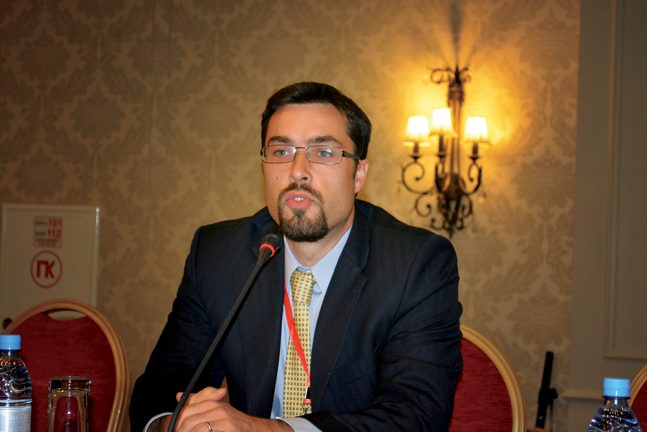
Fortifying foods is proving to be one of the most cost-effective interventions to combat malnutrition in developing countries. Adam Pitt highlights some of the successful programmes and asks what is needed to scale up action on fortification
In the arid and semi-arid lowlands of the Horn of Africa, a global emergency is unfolding. More than 10 million people are in urgent need of external food assistance, less than a year after the announcement that 72 countries had achieved the Millennium Development Goal of halving the number of people who suffer from hunger.
Many more are at risk of severe malnutrition amid concerns that the situation in sub-Saharan Africa, which is experiencing the driest rainfall season for 35 years, is also deteriorating and will compound already poor food production from previous years. In a continent where structural food security has been a challenge spanning generations, history is threatening to repeat itself.
But unlike the famine that made international headlines in 1984, food security is no longer seen as just an African problem. NGOs are currently facing daunting challenges in Yemen, Syria, Afghanistan and El Salvador as well as the Horn of Africa, to tackle the hidden hunger of malnutrition as well as the threat of a complete breakdown in food supplies.
No wonder the Director-General of the Food and Agriculture Organisation, José Graziano da Silva, declared the Sustainable Development Goals to be the most ambitious commitments ever made in the 70- year history of the United Nations.
“We have given ourselves an enormous task,” Graziano da Silva told world leaders gathered at the UN General Assembly in New York, in September 2015. “We can only rest when we achieve zero hunger. We need to build sustainable agriculture and food systems, that are resilient to stresses and better able to cope with– and respond to–climate change.”
In terms of combatting chronic hunger as well as malnutrition, the starting point is staple foods as market forces have meant that many low and middle-income countries have become reliant on a single crop.
To maintain staple crop production is a battle of science and nature but is not one based solely on combatting the stresses of climate change. A few years ago cassava, a root crop eaten by 800 million people in Africa, Asia and Latin America, was being touted as the staple that could beat rising temperatures from climate change. But now that too is under threat from disease transmitted to crops by whiteflies.
“I work with scientists and smallholding farmers in East Africa, using big genomic data to solve agricultural issues involving cassava, which feeds 800 million people,” says Laura Boykin, a computational biologist at the University of Western Australia. “The fact cassava is dying is alarming but the fact it leaves farmers with zero yield is even more so.”
Boykin is working to collect different types of whitefly to look at how the diseases they transmit to cassava, the mosaic virus and the brown streak virus, can be tackled given that together they can wipe out 100 percent of a farmer’s crop. Her comments reflect the fact that food security is not only a matter of health but also economics.

The same correlation applies to the hidden hunger of malnutrition. With 2 billion people forced to survive on diets that lack the essential vitamins and nutrients needed to develop properly—which can lead to lower productivity, reduced immunity and particularly for children, the risk of death— providing the right kinds of food is also vital in impacting the health and the productivity of people in developing countries. If people cannot eat the right balance of nutrients, the manifold effects on their health reduce GDP in affected economies by up to 2.65 percent according to the Global Alliance for Improved Nutrition, which is one of the organisations that is leading the work on using staple foods as a vehicle through which nutrition can be advanced.
Doing the maths
Attacking nutritional deficiencies through the addition of vitamins and elements to food is known as food fortification and it has been practised in North America and Europe since the 1920s.
“Globally we have a very long history of public health success through large-scale food fortification,” explains Senoe Torgerson, Program Officer at the Bill & Melinda Gates Foundation. “In the United States we have seen nearly a century of experience in addressing issues like goitre by putting iodine in salt, and we’ve nearly eliminated goitre universally.”
Not to be confused with the fortified foods found on the shelves of health stores in high-income countries, Torgerson says what makes adding vitamins and minerals like iron or folic acid to staples in developing countries is that it is in the hands of local processors.
“The companies that are producing staple foods in lower and middle-income countries are seldom big multinationals, and when we talk about reaching nutritionally vulnerable people, local companies play a critical role in delivering high-quality fortified foods,” says Togerson.
One of the main benefits of food fortification is the fact that supply chains are already set up and require no additional investment. From a consumer behaviour point of view, there is also no requirement for communities to change their eating habits or stretch food budgets.
“A number of studies have compared the cost of food fortification with other alternatives, but the consensus is that fortification is the most cost-effective development intervention,” says Greg Garrett, Director of Large Scale Food Fortification at the Global Alliance for Improved Nutrition. “With salt, for example, you’re talking about US$0.10 per child for a year.”
That doesn’t mean there is no cost to the producer. “A large miller in a country like Kenya might still spend US$400,000 a year on micronutrient mix,” says Garrett. “However, that is fully sustainable and affordable to the producer and the consumer because those costs are passed along to millions who purchase that flour with additional cost to the individual consumer as little as one US cent per five kilogrammes of flour.”
As a partner to GAIN, the Bill & Melinda Gates Foundation has committed funds in support of the work undertaken by the Global Alliance for Improved Nutrition, with one of the primary uses being working to establish the national mandates, policies, and regulations required to scale up food fortification markets and industrial practices. Today, 85 countries have legislation to mandate fortification of at least one industrially milled cereal grain, including wheat flour, maize products, and rice.
“In the last six years we’ve seen mandated legislation passed in 12 of the 30 countries we have worked in. This involves exploring how the industry is fortified after a new legislation is passed and whether the quality of that product is really as good as it should be,” says Garrett.
Clear policy and regulation is key to the success of food fortification. In Asian countries, where rice is the key staple, UNICEF has been promoting food fortification in countries like Myanmar but the institutional support is not yet in place.
“We need the public sector to assume some level of responsibility for the cost of the industry and we need clear policy guidelines that public, private, and social organisations can follow and enforce,” says Aye Thwin, a consultant to UNICEF. “We also have no hot extrusion technology or experience, and lack pre-mixed micronutrients and blends and therefore investment in these areas is critical.”
After breaking away from 49 years of rule by an oppressive military junta with the first free elections in 2011, Myanmar recorded over 8 percent growth in 2014 following its reintegration within the global economy but this has done little to improve nutrition among a population of more than 53 million. More than one-third of children under five years old are either malnourished or are stunted, and an estimated three out of every four pregnant women are anaemic.
The Program for Appropriate Technology in Health (PATH), an international NGO with headquarters in Seattle, US, has been supplying fortified rice to countries like Brazil, Cambodia and India, after the technology was donated to it in 1997 by Bon Dente International.
Starting this month, a new initiative led by PATH will see fortified rice made available on the grocery store shelves in Yangon, the capital of Myanmar, as part of its Smart Solution #5: fortified rice programme. Such ventures are still perceived as a risk for rice millers in Myanmar, but with a grant from the Livelihoods and Food Security Trust Fund local partners have been found.
Research into food production and the introduction of technologies that will be appropriate for small- scale local rice mills will be important in ensuring that the industry is accessible by those who are nutritionally vulnerable in Myanmar, which consumes the most rice per capita in the world.
“My perception is that the industry is excited for the new opportunities that fortification may offer but is hesitant to jump in. There is strong support from development agencies but also uncertainty in the market, and that impacts on investment,” says Aye.
The need for local compliance
Enforcing standards and compliance is as important as getting them passed in the first place. This involves close collaboration with producers as well as governments through a case- by-case approach.

“Before food fortification, we do rapid surveys to find out what people are consuming, what’s available on the market, and whether the industry is ready to deliver these foods,” says GAIN’s Garrett. “That’s when you choose the vehicle–flour, maize flour, oil–they’re all available as staple foods and accessed relatively affordably in lower and middle-income countries.”
When it comes to progress with food fortification, Garrett is keen to highlight West Africa, where a grant awarded to Cellule de Lutte contre la Malnutrition–a coordination unit that is attached to the Office of the Prime Minister of Senegal–has seen iodine, vitamin A, and iron and folic acid being added to salt, edible cooking oils, and wheat flour, respectively.
This fortification has been carried out in Senegal since 2009, and while 61 percent of women of a childbearing age in Senegal were once considered at risk of inadequate nutrient intake, up to 85 percent of these women now consume fortified foods at least once a week.
“The Senegalese government is doing a great job of monitoring and regulating production and the industry is very compliant and willing to participate in the project,” adds Garrett.
Yet, despite achieving scale sufficient to silence at least some of the critics that said fortification will only reach the privileged few in urban populations, further resources will be needed to support enforcement of regulations and industries in other countries.
“We found through some studies that compliance levels can be 50 percent or lower, which is important because if food is not adequately fortified it is not delivering essential nutrients in the quantities that are required to improve health status,” says Torgerson.
This next phase of development could cost as much as US$250 million over the next ten years, based on a cost model developed by the Global Alliance for Improved Nutrition. The model looks at 25 country programmes for fortification and is based on plans to increase production. The organisation’s budget for fortification is currently US$5 million a year, meaning such ambitions will depend on increased financial support.
And while food fortification may be a cost-effective intervention, we also need to remember that it can only take place if there is a sustainable supply of food. While UN chiefs might emphasise the battle against climate change in terms of developing sustainable food supplies, Laura Boykin’s search for the next species of whitefly and the prevention of the spread of mosaic disease has the staple diet of 800 million people in her hands.
Boykin has just returned from a project in Tanzania funded through a US$18 million grant provided for the African Cassava White Fly Project by the National Resources Institute at the University of Greenwich. She is also working on the Cassava Disease Diagnostic Project in Tanzania, which is funded through the Bill & Melinda Gates Foundation and has a budget of around US$8 million.
At the moment East Africa is the only region where the disease is rife but the danger is that it will spread to West Africa, the largest producer of cassava in the world. Boykin’s message is blunt but honest: “There’s a place for food fortification, but there’s not going to be a place for fortified cassava if it’s dead. So we either deal with food security now or we deal with it when our staple foods are dead.”
It is indeed an enormous task to move to zero hunger but individuals like Boykin are leading the fight in ways that the vested interests of governments and companies often ignore.

